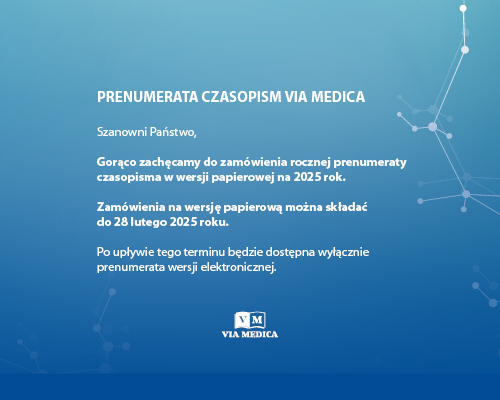Vol 78, No 9 (2007)
ARTICLES
Human papilloma virus infection in pregnant women with normal Pap-smears, HPV oncogenity and risk factors
Ginekol Pol 2007;78(9).
Abstract
The process of carcinogenesis in both types of cervical carcinoma is dependent on the infection of oncogenic types of HPV. HPV infection could be diagnosed on the basis of whether or not the DNA virus in present. In pregnant women the latent-persistent infection easily changes into its active form. This process is related to changes in immunological response and concentration of the hormones. Aim: The main aim of the study was to evaluate the frequency of HPV infection in healthy pregnant women in second and third trimester of pregnancy and the presence of selected risk factors. Material and methods: The study was conducted in 2005-2006 on hospitalized women in The Clinic of High Risk Pregnancy. The first group consisted of 180 pregnant women in 2nd trimester of pregnancy, the second comprised220 pregnant women in the 3rd trimester. In all women the Pap-smears and diagnosis of DNA presence of high and low risk HPV from the border line of cervical epithelium were tested on the first day of the hospitalization. The PCRmethod using Human Papilloma Virus Typing Set was used. Results: In 400 pregnant women the presence of HPV was found in 4,5%, type 16 was fund in 2,5%, type 18 in 1,7%. Combined infection 16 and 18 types was found in 0,2%. In 180 pregnant women in II trimester high risk HPV was found in 4,4%: 16 type was found in 2,8%, 18 type in 1,7%. In III trimester high risk HPV was found in 4,5%: 16 type was found in 2,3%, type 18 in 1,8%, combined 16 and 18 in 0,4%. Low risk HPV was found in 1,0%- type 6. In II trimester in 1,1%, In III trimester 0,9%. There were no differences between HPV infection rate in II and III trimester, pregnant women age, the gravity andHSV2 infection. The difference was found between high risk HPV infection and parity, cigarette smoking and oncological family history. Conclusion: Asymptomatic HPV infection has the same frequency in II and III trimester. High parity, cigarette smoking and oncological family history were connected with an increased rate of high risk HPV infection. All women in reproductive age should be checked for the HPV DNA.
Keywords: Papillomavirus Infections - diagnosispreganacy complications - infectionus



